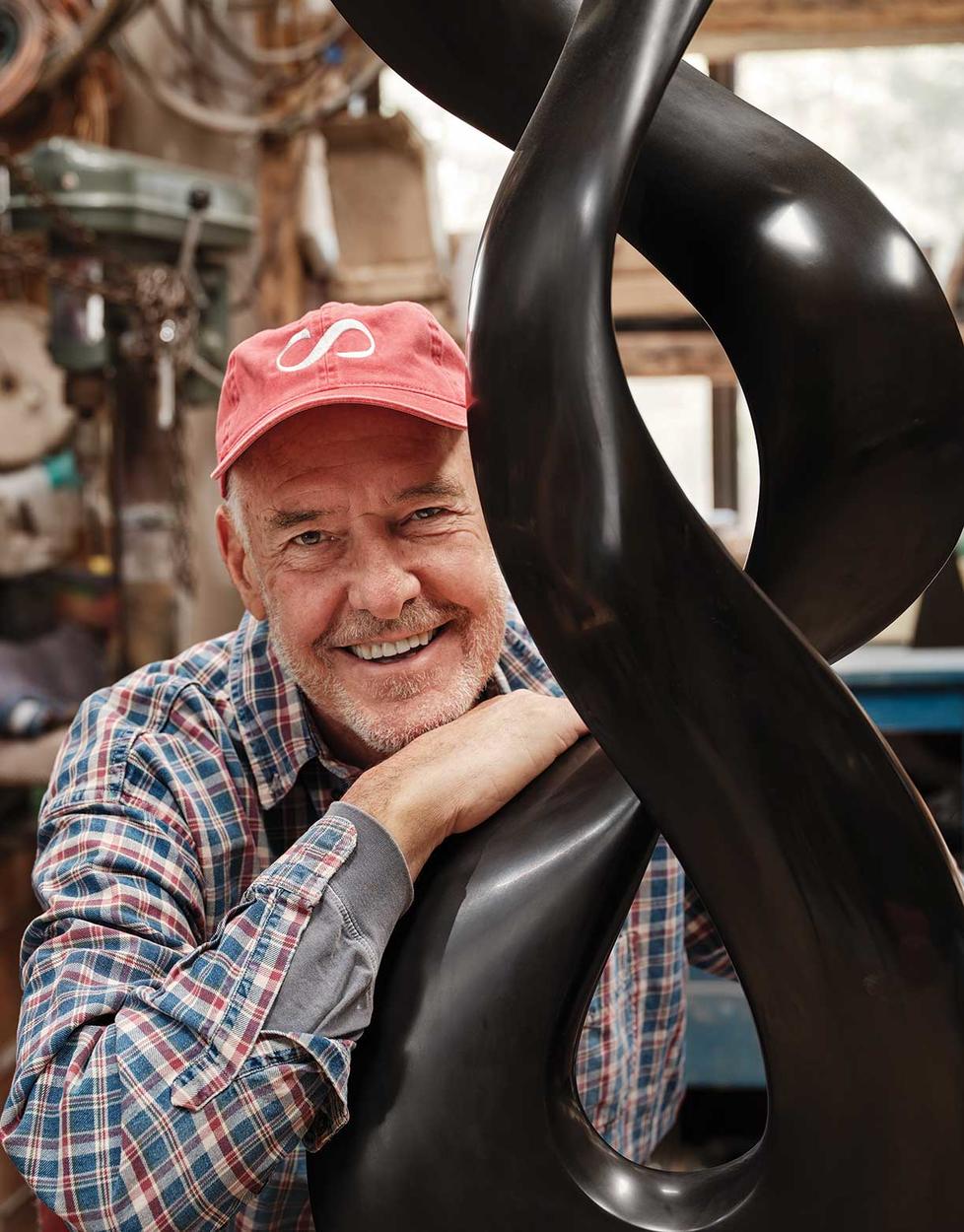In Somers Randolph ’79’s Carvings, Light Plays with Stone
After a half-century of sculpting, Randolph has no plans to stop
At just 7 years old, Somers Randolph ’79 learned to whittle wood with a pocket knife. He picked up the hobby from his great-uncle. It wasn’t until years later, during an introductory course he took at Phillips Exeter Academy that covered architecture, oil painting, and sculpting, that he realized he could make a living from his passion. That class was his first experience with stone, and from there he was hooked.
By the time he arrived at Princeton he had already settled on stone carving as a career. He decided to major in art history because that was the closest offering at the time that aligned with his interests. “I had exposure to wonderful artists, and I wish I’d had the wherewithal or the courage to go into New York City,” Randolph says. He created works for a sculptor show for his senior thesis.
Randolph has been creating stone works ever since. He opened his Santa Fe, New Mexico, studio in 1997, and there he continues his art. He has become known for the dramatic loops and curves of his carvings — shapes he first came across in a line drawing in a philosophy periodical. No two pieces are ever the same, and that’s part of the challenge that motivates him.
“I’m far more challenged by the struggle of making an abstract shape look like it belongs in our world then I am carving something that has existed or might exist,” Randolph says. “I’ve done representational work, but it doesn’t challenge me.”
Carving stone is physically grueling, but Randolph says he thoroughly enjoys it. “Stone carving, as is all carving, is a subtractive sport. So it’s about taking away and leaving something behind,” he says. Now 66, his body and joints are well aware that he’s been carving most of his life, Randolph adds with a laugh.
There’s no typical day, but it often involves grabbing a grinder tool to begin working on a fresh block of stone, or refining the curves and angles of a piece in progress. Again and again he hammers, chisels, and grinds marble, soapstone, granite, alabaster, and more. His pieces range from small works that can sit on a shelf to giant figures for outdoor spaces. It’s like a rhythmic dance he is constantly working at, striving for perfection. His assistant, BenJames Roybal, works alongside him to smooth and refine his shapes.
What is constant is the process itself, Randolph says. “I just keep working, and I’m so lucky that what I make appeals to people enough that I can pay the mortgage and put my daughter through college,” he says. “That’s just good fortune.”
He particularly loves working with translucent stone because of the way the shapes and light play together. “It takes a light in, and then the light bounces around inside of the piece, so it glows,” he says. It makes the pieces come alive.
After a half-century of doing this work, Randolph plans to continue as long as possible. The process of turning a natural element into a work of art is addictive, he says. What’s even better is sharing that work with others. He offers tours of his studio, sells his works in-person and online, and his stone sculptures have been featured in various galleries. To add to the overall experience, Randolph doesn’t name his pieces so that the purchasers can decide what to call the sculpture.
“I love the idea that when you take a stone piece home, it is your piece and you’re the only one that has it,” he says. “It will outlast everything we know.”












No responses yet